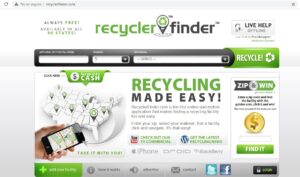This product, so common in our daily life, is a material formed by a paste of ground vegetable fibers mixed with water, which is then dried and hardened. Substances such as polypropylene or polyethylene are also added so that the paper acquires the product’s own characteristics.
The process of making paper is as follows: from the wood of the trees, the cellulose fibers are extracted, which go through a chemical process from which the pulp we were talking about will be extracted. This pulp goes through other processes of washing, filtering, drying, or bleaching. After drying and releasing all the water from the pulp, it is then smoothed and pressed, and, finally, it is treated to give it the final finish.
Is paper recyclable?
The answer is yes, we can recycle most of the paper, and we say most because what is recycled is the cellulose, the main material that forms it, but there are some types of paper in which the main material is not cellulose but is composed of other materials that make them non-recyclable.
We must be careful with toilet paper or sanitary paper, paper stained with grease, waxed paper, plasticized or kerosene, carbonless paper, or thermal fax paper. These are the types that you will not be able to recycle.
What type of paper can be recycled and where to dispose of it
Talking about which types of paper can be recycled implies that there are some types of paper that cannot be recycled. We will discuss this special circumstance later. The paper that can be recycled is that which is composed fundamentally of cellulose since it is this component that is recyclable. They fall into this category:
– Newspapers and magazines
– Advertising brochures and catalogs
– Books
– Paper and cardboard packaging (e.g., shoe boxes)
– Photocopies
– Cardboard egg cartons
– Wrapping paper
This type of paper and cardboard should be disposed of in the blue garbage cans that you will find scattered along the streets. As Ecoembes reminds us, there is one container for every 215 inhabitants approximately. Before depositing it in the container, make sure that the paper waste is free of staples, adhesives, or plastic accessories. It is advisable not to crumple paper and cardboard but rather fold it so that it fits easily.

What kind of paper cannot be recycled?
Can I dispose of toilet paper, fax paper, or napkins in the blue garbage can? This is one of the most frequently asked questions. The answer is no. In the case of toilet paper, the reason why it cannot be recycled is that it will usually be soiled, and this waste cannot be separated from the cellulose. The same happens with waxed paper, in which cellulose and wax are impossible to separate, and other papers such as fax paper.
Nor would it be possible to recycle a pizza box if it were too full of grease. It will only be possible to deposit in the blue container those sections that are free of waste.
How is paper recycled?
In Spain, 71% of the paper consumed is recycled, a rate that places it among the most efficient countries in the world. The recycling process starts with the transfer of the paper from the blue containers to the recovery plants. Let’s take a look at each stage:
1. At the plant, the paper is sorted according to its type in order to obtain a mixture that is as homogeneous as possible.
2. The paper is subjected to a fiber extraction process. Those impurities that are not useful are also removed: plastics and staples.
3. Water is added until a paper pulp is obtained. Subsequently, the inks are removed.
4. The paper is subjected to a bleaching process.
5. Finally, the paper undergoes drying, pressing, and refining.
The possibility of recycling paper and cardboard is not infinite since it gradually loses the cellulose fibers integrated into the pulp. For this reason, it is common to add a small number of virgin fibers during the process.